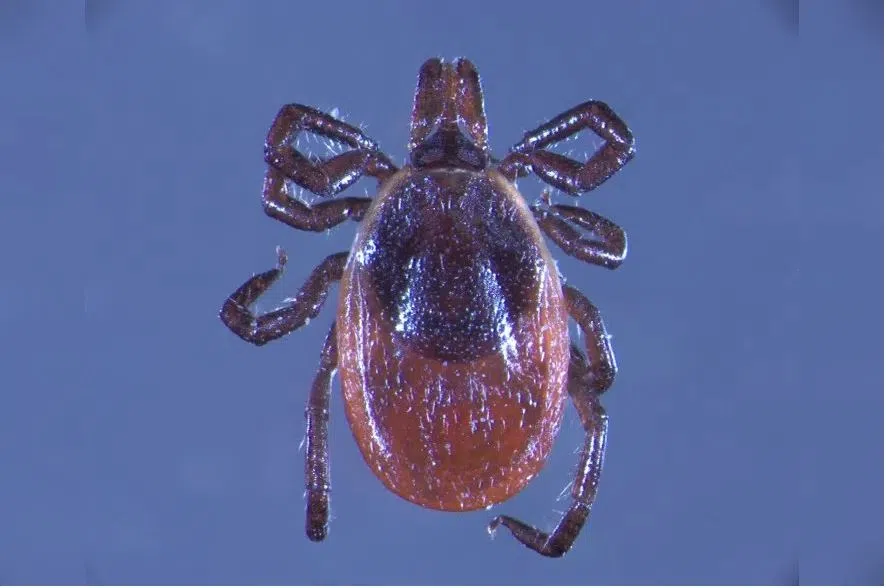With the spring season comes more people looking to spend time outdoors and the Saskatchewan Health Authority says it’s a good time to be on the lookout for ticks.
David Torr, SHA medical officer, said there’s “quite a number” of ticks already out and about in the province.
Torr says Lyme disease is the biggest threat carried by the small parasitic arachnid.
“If you’ve seen a tick, it’s really important to take a picture of that tick and keep that tick until you’ve had an identification of it and send the photo to etick.ca,” Torr said.
“That’s a really fast way of identifying the tick for you and telling you whether it’s very common dog tick or whether it’s actually the more risky tick that can cause Lyme disease.”
Torr explained that black-legged ticks carry a higher risk of Lyme disease and while there aren’t many in Saskatchewan, their numbers have been growing over the years.
Since 2008, almost 38,000 ticks have been identified through voluntary submission, about 150 of them were black-legged ticks, according to Torr.
What can I do to stop ticks?
When heading out in the woods, Torr said it is important to dress in full, bright clothing that protects arms and legs. The bright clothes make it easier to spot ticks on your body.
He also said DEET spray can come in handy.
“Putting your socks over the pants is also important. And then, very importantly, after you’ve been out, check thoroughly for ticks on both clothing and on your body,” he said.
“These ticks can sometimes hide very easily within the hair or just behind the ear. They move quite rapidly and they are quite small.”
The medical officer also said people should check their pets as well.
Torr said symptoms for Lyme disease can vary quite a bit from person to person.
“You can have symptoms presenting much, much later — a couple of weeks later or a few days (after getting bitten),” he said.
“… You might feel cold or a bit feverish but very typically you will see a site that is the characteristic bullseye on the skin, but that can be hard to see in some skin textures.”
Hantavirus also a risk
Another virus that people should pay attention to in the spring is the Orthohantavirus (or hantavirus).
It’s an airborne disease mostly transmitted by rodents. Humans can contract it by coming into contact with rodents or their waste and saliva.
Torr said people should be vigilant for deer mice, which are known to spread hantavirus, while doing their spring cleaning.
Adding that deer mice often hibernate in areas like log piles, cabins that were closed throughout winter, or even farming equipment.
“(The hantavirus) we have in this part of the world is what we call a hantavirus pulmonary syndrome, which affects your respiratory system (and) gives you pretty nasty pneumonia. And hantavirus can be quite fatal,” Torr said.
“It’s a very strong viral disease for which we have no vaccine or specific treatment for, so prevention is really important when you’re going to clean out your shed or clean out your farm machinery, knowing very well that deer mice are very very prominent within our province.”
Torr added that people should aerate areas like sheds before doing spring cleaning and they should do wet cleaning instead of dry cleaning to avoid the spread of dust.
He also said industrial N95 masks are useful in preventing inhalation of any contaminated particles.
Torr said there have been 38 cases of hantavirus between 1994 and 2023, but of those 38, 13 were fatal.
– With files from 980 CJME’s Will Mandzuk











